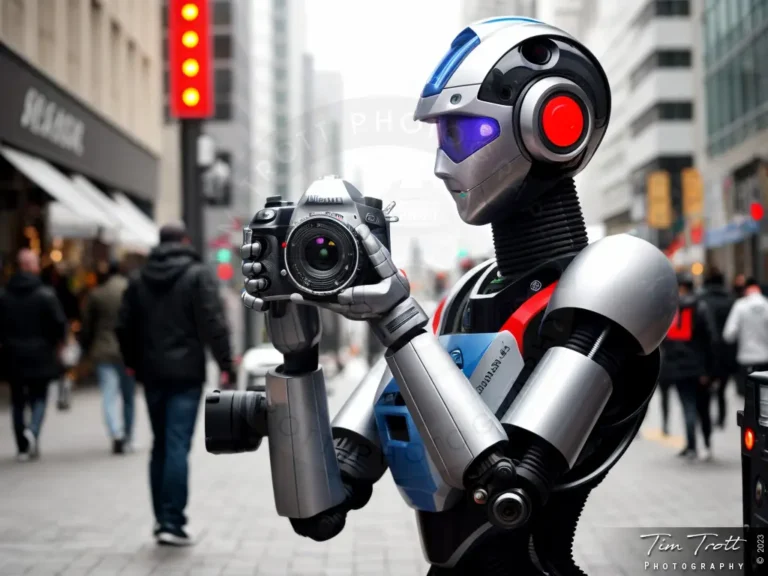Photography has come a long way from traditional film cameras to digital cameras, and now, we are entering a new era with smart photo. As artificial intelligence (AI) and advanced technology become more integrated into our everyday lives, the way we capture and interact with images is also evolving. Smart photos go beyond the standard static images, offering enhanced features like automatic adjustments, object recognition, and interactive elements.
In this article, we’ll explore what smart photos are, how they work, their key features, and why they’re transforming the world of photography.
What is a Smart Photo?
A smart photo is an image enhanced by AI and machine learning algorithms, allowing it to adapt and respond to different inputs. Unlike a traditional photo, a smart photo can automatically adjust lighting, color, and focus to optimize its appearance. Some smart photo systems can even recognize objects, faces, or scenes and tag or edit the image accordingly.
These advanced photos can be captured using modern smartphones, digital cameras, or specific smart photo apps that apply AI-powered filters and enhancements in real-time.
Key Features of Smart Photos
1. AI-Powered Editing
One of the most significant features of smart photos is AI-powered editing. AI algorithms can automatically adjust exposure, contrast, and saturation, delivering high-quality results without manual input. These systems analyze the content of the photo and make real-time corrections, producing perfectly balanced images every time.
2. Scene Recognition
Many smart photo systems have built-in scene recognition, which allows them to identify landscapes, people, or other elements within the photo. This feature enhances the image based on the identified scene—applying, for instance, sharper contrast for outdoor photos or softer lighting for portraits.
3. Enhanced Focus and Depth
Smart photos often incorporate depth-sensing technology to enhance focus, producing the popular bokeh effect where the subject stands out against a blurred background. This feature gives images a professional, DSLR-like quality, even when taken with a smartphone.
4. Interactive and Dynamic Content
Some smart photo applications allow for interactive elements, like animated effects or touch-responsive features. These dynamic elements make images more engaging and can even offer augmented reality (AR) experiences, where users can interact with the objects within the photo.
5. Object and Face Recognition
Smart photo technology can identify specific objects or faces in an image, making it easier to organize, search, or edit photos. For example, a smart photo album can automatically tag individuals or group similar images based on content.
How Smart Photos Work
Smart photos rely heavily on AI and machine learning. The technology analyzes the image data in real time, comparing it against vast libraries of visual information to make improvements. This process often includes:
- Image Analysis: Identifying key elements such as faces, objects, and background scenery.
- Algorithm Application: Using predefined rules and learned behaviors to enhance lighting, color, and other features.
- Real-Time Adjustments: Making instant corrections based on the data collected from the image.
Most smartphones today use this technology in their default camera apps, with brands like Google, Apple, and Samsung leading the charge with their AI-powered photography systems.
Why Smart Photos Are Transforming Photography
The evolution of smart photo technology is reshaping both amateur and professional photography. Here’s why:
1. User-Friendly for Everyone
With smart photos, you don’t need to be a professional photographer to capture stunning images. The automatic adjustments and AI-driven enhancements make it easy for anyone to take high-quality photos, making photography more accessible to the general public.
2. Time-Saving
Smart photo systems eliminate the need for hours of post-processing. Whether it’s editing lighting or retouching blemishes, AI does the heavy lifting instantly, allowing photographers to focus more on shooting and less on editing.
3. Elevates Creativity
With interactive features, AR integration, and instant effects, smart photos offer limitless opportunities for creative expression. Users can experiment with unique styles and effects, taking photography beyond static images to something more immersive and engaging.
4. Improves Image Organization
Thanks to AI-driven object and face recognition, smart photos can be easily organized and retrieved. This is particularly helpful for photographers or content creators with large photo libraries who want a seamless way to sort through their work.
The Future of Smart Photos
As technology continues to advance, smart photos are expected to become even more sophisticated. Future developments may include real-time 3D image capture, more advanced AR integrations, and even photos that can change dynamically based on environmental inputs.
Smart photos represent the fusion of art and technology, offering an intuitive and powerful way to capture the world around us. Whether you’re an amateur photographer or a seasoned pro, these AI-enhanced images are transforming the way we think about photography, making it smarter, faster, and more creative than ever before.



